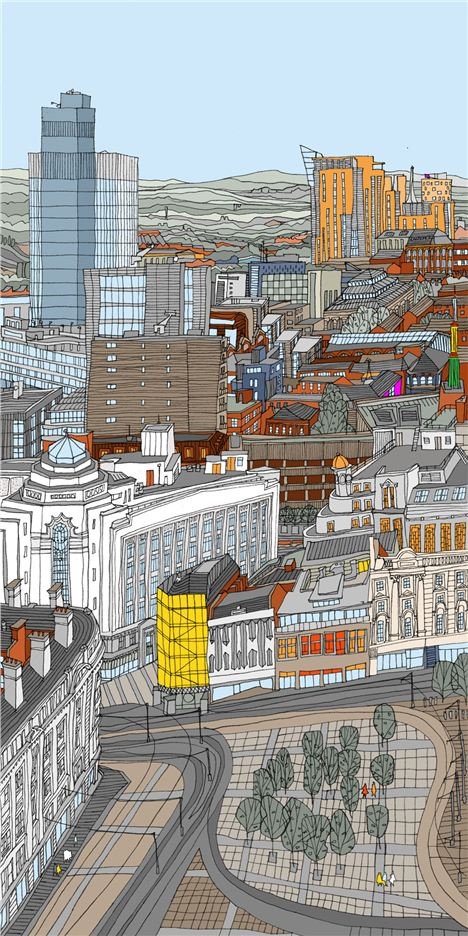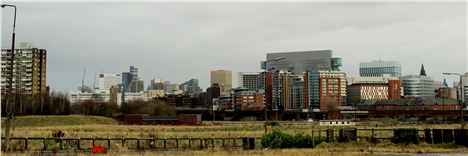THESE are the population and growth figures from the 2011 Census for Greater Manchester plus comparison figures for Liverpool.
Manchester's growth was the highest for any major provincial city at a staggering 19%. According to the census much of the national growth figure of 7% is accounted for by immigration - 55% of this figure.
Manchester 503,100 +19%
Salford 233,900 +7.8%
Bolton 276,800 +5.9%
Bury 185,100 +2.4%
Rochdale 211,700 +2.6%
Oldham 224,900 +2.9%
Tameside 219,300 +2.6%
Stockport 283,300 -0.5%
Trafford 226,600 +7.8%
Wigan 317,800 +5.4%
Total for Greater Manchester: 2,682,500
Total at 2001 census: 2,516,200
Merseyside: 2011 population 1,391,000 (Liverpool grows by 5.5% to 466,400); 2001 population 1,367, 800.
Regional growth in Greater Manchester: 6.61%. National growth: 6.98%
Sir Richard Leese, Leader of Manchester City Council, said: "A growing population reflects a thriving city so it is excellent news that more people are seeing the attractions of Manchester as a place to work, live and invest. Manchester had undergone a long period of population decline but the reversal of this trend in the last decade is a testament to the way the city has established itself as a world-class international city.
"Our Community Strategy put the target population figure at 480,000 by 2015. The Census figures show that we have surpassed our own targets four years early. And the core strategy, our plan to drive development in the city over the next 15 years, estimates that Manchester will have an extra 80,000 people by 2027. The figures today would suggest that we are well on the way to achieving this target.”
"Population growth brings with it many opportunities but the challenge ahead is to ensure that we have the services and infrastructure which meet the needs of the growing population so that the city can reach its full potential."
A spokesman for Stockport, the only local borough to dip in population, said they are looking into the 2011 census figures and will release a statement when they've been analysed.
Across the North West on census day (27 March 2011) the population was 7.1 million, an increase of 4 per cent from 2001 when it was 6.7 million.
The North West had the third largest population of any English region but had seen a decrease in its population between 1981 and 2001. However, the period from 2001 to 2011 saw population growth of 4 per cent – larger than in the North East but still less than the population growth in other English regions and Wales.
By comparison the population across the whole of England and Wales increased by 7 per cent to 56.1 million, the largest growth in population in any 10-year period since census taking began in 1801.
Nearly all local authorities across England and Wales increased in population but eight local authorities in the North West saw a decrease in population: Barrow-in-Furness (4.0 per cent), Knowsley (3.5 per cent), Sefton (3.2 per cent), Burnley (2.7 per cent), Hyndburn (0.9 per cent), St Helens (0.8 per cent), Stockport (0.5 per cent), and Blackpool (0.2 per cent). Across all of England and Wales 17 local authorities decreased in population.
The local authority with the largest proportion of people aged 65 and over was Wyre with 25 per cent; the smallest proportion in this age group was in Manchester with 9 per cent.
Manchester was the largest authority in the North West by population with 503,100 people, an increase of 80,400 (19 per cent) between 2001 and 2011. The percentage increase was the third largest in England and Wales behind Newham and Tower Hamlets.
The local authority with the fewest people was Eden, with 52,600 people but it still grew in population by 5.4 per cent, which is more than the average for the region.
Eden was also the least densely populated local authority in England and Wales, with 25 people per square kilometre. By contrast, Manchester was the most densely populated local authority in the region with 4,350 people per square kilometre, which equates to 43 people on a rugby pitch.
The local authority with the largest proportion of people aged 65 and over was Wyre with 25 per cent; the smallest proportion in this age group was in Manchester with 9 per cent. Blackburn with Darwen had the largest proportion of people aged 19 and under with 29 per cent, with the smallest proportion in this age group being 20 per cent in South Lakeland and Fylde.
Across England and Wales there was a 13 per cent increase in the number of children under five, with over 400,000 more in 2011 than in 2001. In the North West there were 36,500 under fives compared to 2001, an increase of 9 per cent in that period. Blackburn with Darwen had the largest proportion with 8 per cent, with the smallest proportion in South Lakeland (4.3 per cent).
The total number of households in the North West was 3 million. Blackburn with Darwen also had, along with Oldham, the largest average household size in the region, with 2.5 people; Fylde and Blackpool had the two smallest (2.1 people).
The City of Manchester had a population over 800,000 in the 1930s but slum clearance and the growth of post-WWII housing estates halved that, although the population of Greater Manchester grew over the same period. The population of the city of Manchester has over taken the city of Liverpool in this census for the first time in many decades.
You can follow Jonathan Schofield on Twitter on@JonathSchofield
 Neil Dimelow's most excellent panoramas - click here
Neil Dimelow's most excellent panoramas - click here











